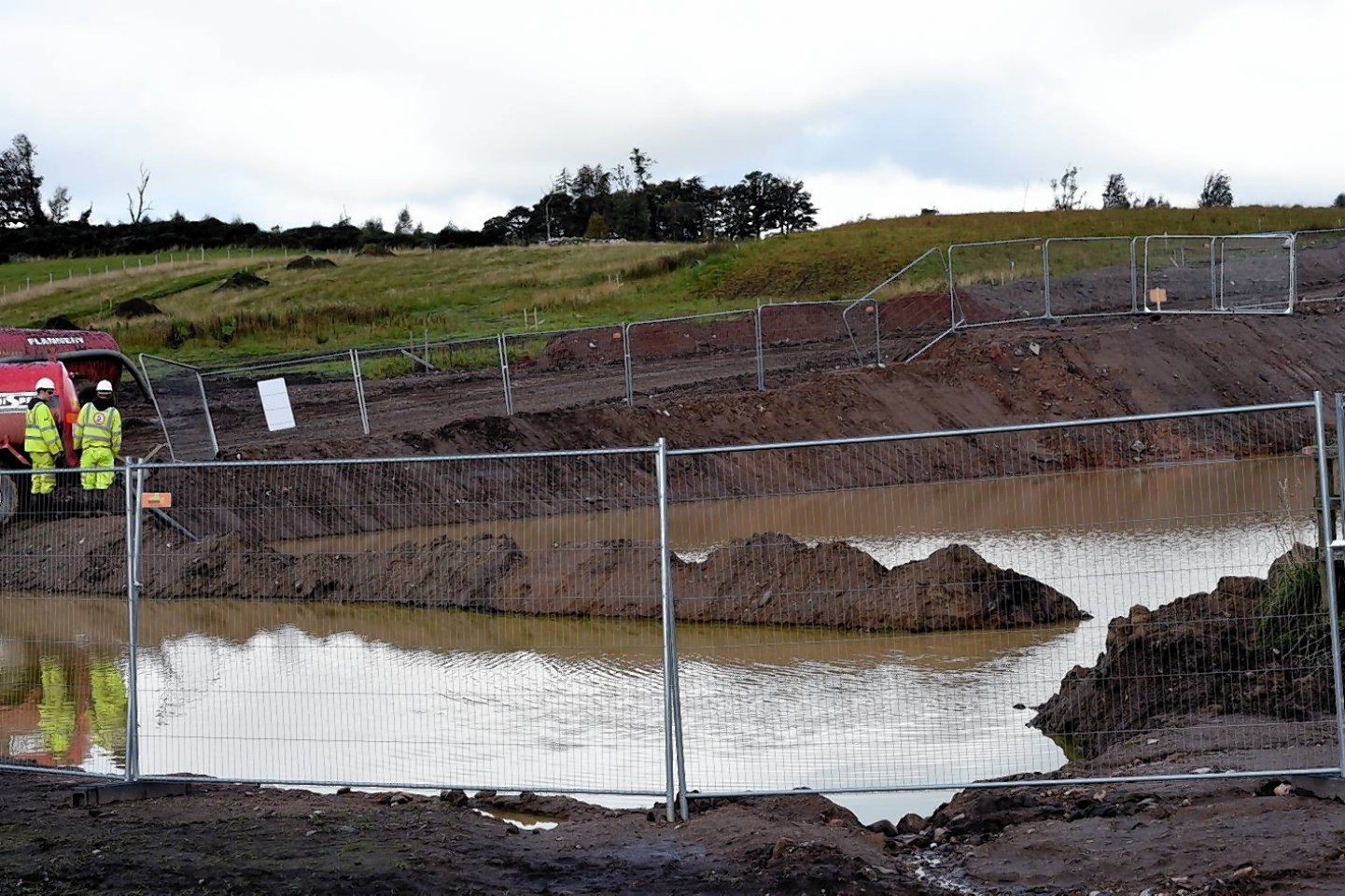More than 100 workers have been injured during the construction of the north-east’s long-awaited £745million bypass.
The Press and Journal can reveal that on average at least one labourer a week has been hurt since the commencement of the Aberdeen Western Peripheral Route (AWPR) project.
Last night fears were raised that staff working on the road were being put at “unnecessary risk” while union bosses said the figures were “unacceptable”.
Concerns were also expressed over the possibility that the real number of injuries may be much higher as it is believed some employees may fail to report incidents for fear of losing their jobs.
In total 115 injuries have been recorded across the 28-mile site since the sod cutting ceremony in early 2015.
Last month, a contractor based at the Milltimber stretch of the multimillion-pound project was seriously injured after being crushed by a half-tonne pipe.
He was left with four cracked ribs, a tear to his liver, and two dislocated toes.
In February, a worker had to be rescued from a truck after the vehicle was driven into a deep ditch.
And early last year, transport bosses launched an investigation, despite no injury, after a boulder smashed through the roof of a 4×4 after a controlled explosion at the Rothnick section of the bypass.
Last September, work on parts of the AWPR had to be halted for four days after a 29ft-high cage fell at the Goval Bridge section.
Last night, north-east MSP Ross Thomson called for assurances that those on site at the AWPR are able to work in a safe environment.
He said: “I think the public will be shocked to hear that there has been the equivalent of one accident every week since work started on the AWPR.
“Clearly, with any major project, there will be some incidents, but there have been concerns reported by workers on the project that safety procedures are not as stringent as they should be.
“These findings suggest that Transport Scotland needs to look more closely at health and safety practices along the route of the bypass.
“We all want this road to be built and open to traffic as quickly as possible, but the workers on site cannot be put at unnecessary risk.
“I will be seeking assurances that everything is done to ensure any future incidents are kept to a minimum.”
Unite the Union officer John Clark added: “The figures are unacceptable.
“I believe these figures are on the conservative side because I know of more incidents where people have been injured and it has not been recorded and workers have continued going into work because they fear losing their job.”
A spokesman for Transport Scotland said that the safety of its workers was “paramount” and said the “vast majority of the incidents recorded are all minor.
He said: “The health and safety of all our workers is paramount to Transport Scotland and the contractor Aberdeen Roads Limited.
“All workers are required to hold the necessary health and safety qualifications relevant to their role and robust processes including a mandatory inductions, ongoing training, and regular talks highlighting risks and hazards are in place for all site workers and sub-contractors.
“Site supervisors also receive daily activity briefings to highlight the types of work, hazards and safety precautions to be implemented and these are supported by regular site inspections, safety tours and audits, which are reviewed at weekly health and safety meetings.
“Regular stand down meetings are also held with all staff across sites to reinforce safety and environmental messages and practices.
“Nearly 9000 health and safety inductions have already been carried out since the start of works, and while the vast majority of recorded incidents are minor all are fully investigated to ensure any lessons can be applied to everyday working practices.”










